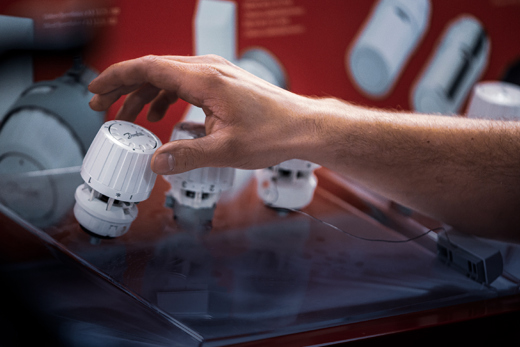
By Martin Rossen, Senior Vice President, Head of Communications & Sustainability at Danfoss.
Originally published on politico.eu.
As Europe braces for the impact from the shutdown of the Nord Stream I natural gas pipeline, the most pressing pain point will be the burning hole in all our pockets. Energy bills are already surging for both businesses and consumers, and they will continue to rise throughout the upcoming winter and spring. But even the smallest of changes can make a huge impact.
Of course, most modern homes and buildings, which usually have better insulation, will be more resilient to price rises. For example, the United Kingdom has seen 38,436 new homes begin construction and 37,164 houses completed between April 2021 and March 2022 [1]. These new builds will be in line with the government’s Clean Growth Strategy, which aims for homes to emit 75 to 80 percent less carbon dioxide by 2025 [2]. And as Prime Minister Liz Truss has taken command of the country over the past few weeks, we can expect to see a continued push on this front.
However, energy efficiency and safeguarding homes from ever-increasing energy prices go much further than just modern insulation. There are many different ways that legacy buildings can become more efficient — particularly when it comes to radiators.
Indeed, a simple switch to using more efficient thermostats could save European Union citizens up to €12 billion in energy bills [3].

Currently, the average European household has a modular reed valve on its radiators. These radiator valves will only open and close if you physically turn them on and off, as there is no neutral setting. However, upgrading to a more efficient type of radiator thermostat, which switches itself on and off as it seeks to reach its target room temperature, substantially increases energy efficiency. And as energy bills continue to skyrocket, a simple swap such as this would be extremely cost effective, as it doesn’t require constant intervention — one can simply set the temperature.
It is estimated that there are currently 70 million homes in the EU that still have the outdated kind of radiator valves [4]. That’s around 500 million radiators that need to be upgraded, and a further estimate of 250 million radiator thermostats that are more than 20 years old and should be economically upgraded. In doing so, the annual EU energy saving would be 160 Terawatt-hours , saving 29 million metric tons of carbon dioxide and nearly €12 billion on EU citizens’ energy bills. These upgrades would pay back in just two years, with an overall return on investment of €7 for every €1 spent [5].
This type of payback is much needed throughout Europe. For example, according to a new analysis by Allianz Trade, the number of households in energy poverty in the EU has increased by more than 50 percent since June 2022 [6]. A large increase of energy bills throughout the bloc could compound this problem and result in widespread energy poverty across the entire Continent.
So, why not make it mandatory that all homes include energy efficient thermostats in order to mitigate this crisis?
There’s no excuse not to do this, and we’ve known about this option for a long time — these types of radiator thermostats have been available for over 40 years. Within the last 10 years, in the U.K. alone, 6.8 million single-family housing starts have been made, including 1.53 million custom homes [7]. On average, a typical three-bedroom home will have 10 radiators, which means that — without even mentioning renovations — there was an opportunity to install these thermostats for 68 million radiators [8]. And that’s just one country!
Taking a closer look at the U.K., we can see other issues have also led to this problem. In 2006, instead of maintaining legislation for efficient thermostats to be installed when a boiler is replaced, it was assumed that most customers would choose to have them installed of their own accord. Within three years, the annual sales of these thermostats had declined by nearly 30 percent, while boiler sales had increased by 7 percent [9].

In contrast, German regulations, which have been in place since the early 1970s, state that all homes must have such thermostats. And as a result, 95 percent of homes in Germany have them, compared to just 59 percent in the EU as a whole.
We need regulation. The rising cost of living has already led many European households to seek government help, and this number will only increase in the coming months as energy prices surge further.
But it’s not just the cost of energy that warrants the push for regulation and change. The summer heat waves we’re enduring have shown us all the importance of combating the climate crisis. And as Europe continues to struggle with the effects of an ongoing drought, we have to hope this will highlight the importance of taking action on the climate crisis, as well as the need for regulation that cuts down on carbon emissions.
It’s obvious we also need to invest in renewables — the benefits of this need no explanation. But they are a long-term investment, and the energy crisis is unfolding now. We need action now, and we need prioritize energy efficiency now.
And if small changes, even as small as just changing thermostats on a radiator, can make such a big difference, what are we waiting for?
Let’s seize greater — more reliable — control of the temperature inside our homes, offices and public buildings. In doing so, we can take powerful steps toward limiting the warming outside, while also keeping our energy bills as low as possible.

